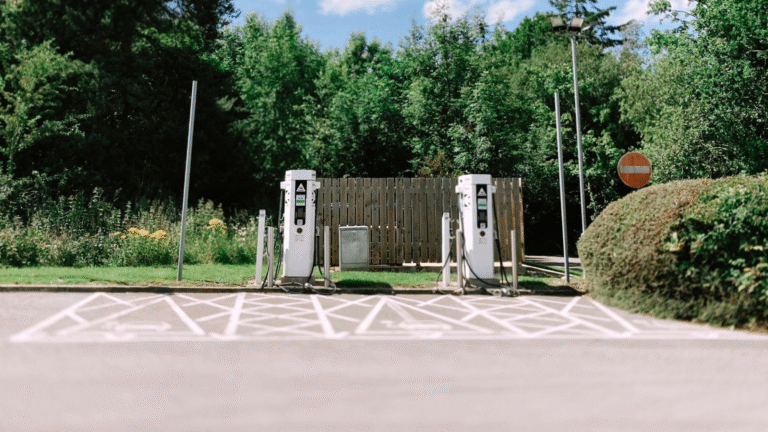Fast charging underpins long-distance EV travel and is one of the most visible parts of the electric vehicle ecosystem. But fast chargers are expensive to build, operate and maintain — so the ownership landscape in Australia is diverse: private networks, fuel retailers, utilities, independent operators, and government-backed projects all play a part. Understanding who owns and operates fast charging helps buyers, fleets and planners know where to invest, how coverage expands, and where bottlenecks may form.
Table of Contents
- Why ownership structure matters
- The main types of fast-charging owners in Australia
- How business models differ (capex, opex, revenue streams)
- Challenges owners face and how they respond
- The role of governments and public funding
- What this means for drivers and fleets
- FAQs
- Conclusion
1. Why ownership structure matters
Who owns a charging network affects pricing, uptime, geographic coverage, interoperability and investment speed. A commercially-driven provider may prioritise high-traffic corridors; a government program may focus on regional equity. Fleet operators need predictable service levels; consumers prefer broad roaming and straightforward pricing.
2. The main types of fast-charging owners in Australia
a) Dedicated charging network operators
These companies build, own and operate chargers as their core business. Revenue comes from charging fees, subscriptions, and sometimes advertising or retail partnerships. They often expand by securing long-term site agreements along highway corridors and in cities.
b) Fuel and retail networks diversifying into EV charging
Petrol station chains and convenience retailers use chargers to retain customers as refuelling habits shift. They have site experience, customer flows, and retail synergy (coffee while you wait), but must invest heavily in electrical upgrades.
c) Utilities and energy companies
Energy companies and retailers sometimes install chargers to manage load, sell electricity, or offer bundled EV energy plans. They can combine charging with smart-grid services and vehicle-to-grid pilots.
d) Local councils and government-backed projects
Governments fund chargers to ensure regional access, stimulate tourism, or subsidise early-stage network coverage. These projects can prioritise coverage over immediate profitability.
e) Private landowners and hosts (hotels, malls, workplaces)
These operators install fast chargers for customer convenience and competitive advantage. They may contract operations to specialists.
f) Hybrid ownerships and partnerships
Common in Australia: joint ventures between charging companies, energy firms and retail hosts that split costs, revenue and risks.
3. How business models differ (capex, opex, revenue streams)
- Capex-heavy models: Fast chargers and grid upgrades are capital-intense. Owners often seek subsidies, debt financing and land agreements.
- Revenue models: Pay-per-use, subscriptions, memberships, or mixed. Some operators prioritise high kWh prices with superior uptime; others offer low prices but rely on volume.
- Value-add: Retail revenue from customers waiting to charge, advertising, and energy services (e.g., selling fast-charge bundles) often improve economics.
4. Challenges owners face and how they respond
a) Grid connection and upgrade costs
Fast chargers can trigger expensive grid upgrades. Owners manage this by co-funding, installing battery buffers, or negotiating demand-management solutions.
b) Charger reliability and maintenance
Remote sites are expensive to service. Operators create local maintenance hubs, SLAs and remote monitoring to keep uptime high.
c) Site selection & utilisation risk
Building in low-traffic areas risks poor returns. Governments often subsidise these sites to close gaps, while private networks focus on high-traffic corridors.
d) Interoperability and roaming
Operators work on roaming agreements and unified payment to reduce the “app fatigue” for drivers.
5. The role of governments and public funding
Public funds are often catalyst capital: grants, co-funding and concessional loans reduce private risk in low-demand regions. Governments also mandate interoperability standards and support corridor buildouts to ensure national coverage.
6. What this means for drivers and fleets
- Expect a mixed ownership landscape for some time. Use apps showing multiple networks and consider membership plans if you travel frequently.
- Fleet operators should prioritise dedicated depots for predictable charging but plan for public fast chargers on longer routes.
- Look for chargers operated by owners with strong maintenance reputations and clear roaming policies to minimise downtime risk.
FAQs
Q: Who sets fast-charger pricing?
A: Owners set pricing within market and regulatory frameworks. Commercial operators price for margin; government sites may subsidise costs for users.
Q: Are fuel companies competitive owners of chargers?
A: They have advantages (sites, retail synergies) but need to invest in grid upgrades and new business models.
Q: Will one network dominate?
A: Unlikely in the short term. Partnerships and roaming are more realistic than a single monopoly.
Conclusion
Fast-charging ownership in Australia is diverse and evolving. Private network operators, retailers, utilities and government projects each fill roles that together create coverage. For drivers and fleets the key takeaways are: use multiple networks, prioritise predictable uptime and keep an eye on partnerships and roaming agreements that make travelling easier. Investment in grid upgrades, battery buffers and reliable maintenance will determine which networks succeed over the long term.
Meta Description: Who owns Australia’s fast-charging networks? Explore the operators — private networks, fuel retailers, utilities and government programs — and what ownership means for pricing, reliability and coverage.
